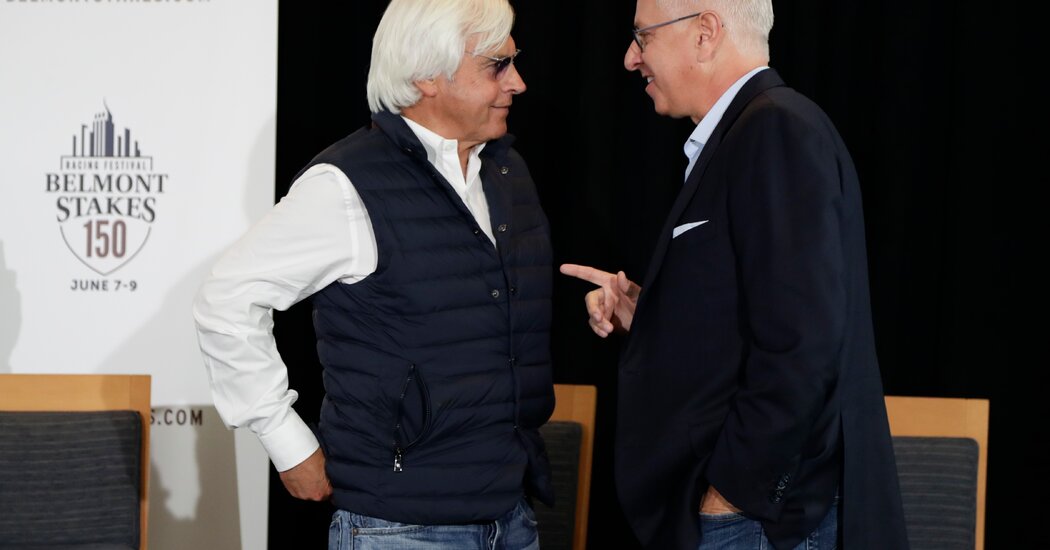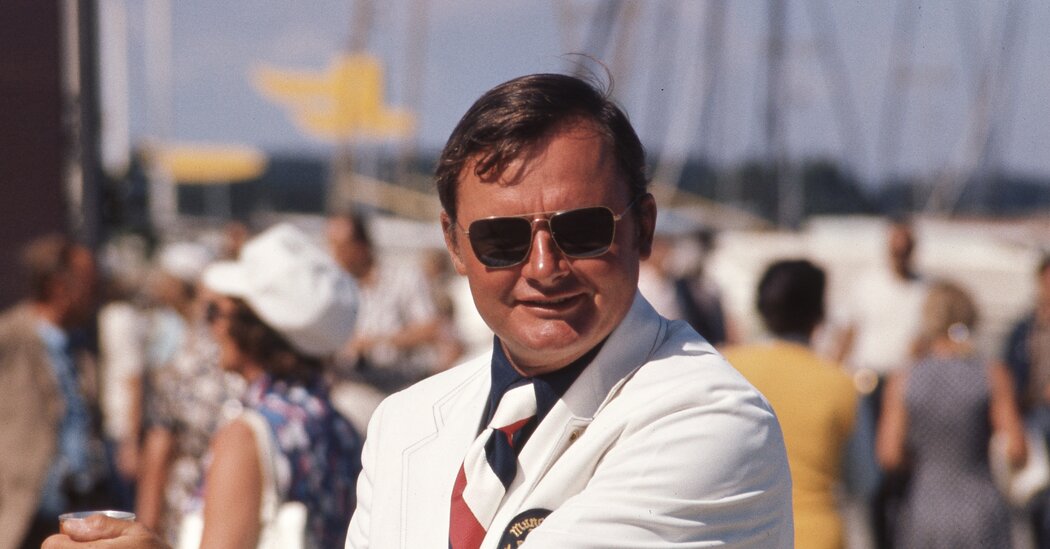Oakland Faces a ‘Devastating’ Future Without Pro Sports
OAKLAND, Calif. — Sitting in the Oakland Athletics’ dugout last week, Tony Kemp could not avoid the sights and sounds of protesters as they marched across the stadium in green T-shirts with the words “Sell The Team” emblazoned on the front, holding signs that lamented the team’s likely fate.
The rest of the fans, what few there were, joined the protesters’ chants urging John Fisher, the owner of the A’s, to relinquish his hold on the club. They also yelled in rhythmic unison for the team to, “Stay in Oakland,” and “Save their jobs,” referring to friendly ushers and security guards, sympathetic to their cause.
“It’s tough,” said Kemp, who is in his fourth season in Oakland. “You are in the dugout and you just feel for them. You think about generationally, people raising their family here and wanting to take their kids to A’s games because they were brought to A’s games as kids. It’s very hard.”
Kemp, like most of the Athletics’ players, empathize with the fans, but “hard” does not adequately reflect their plight. The team announced last month that it had reached a deal to purchase land in Nevada for a new stadium and planned to move to the Las Vegas Strip by the 2027 season. It was a crushing blow to the loyal fans, some of whom have cherished the A’s since they moved to Oakland, Calif., in 1968.
But worse, if the relocation happens, the A’s would become the third and final major sports team to leave Oakland since 2019, following the N.B.A.’s Golden State Warriors, who moved across the bay to San Francisco, and the N.F.L.’s Raiders, who fled Oakland for Las Vegas in 2020. All three teams had thrived at various times on the same asphalt acreage in an industrial corner of the city southeast of downtown. But if the A’s actually put together enough money to follow through on their plans, no major professional sports team will be left.
For a city and a region of proud, resilient residents, it would be a shattering triple rejection.
“The last couple of years, people have just been pummeled by the loss of the Warriors, the loss of the Raiders, and now the A’s,” said Jim Zelinski, a co-founder of S.O.S. (Save Oakland Sports). “It’s just devastating.”
Zelinski, who attended the first Oakland A’s home game on April 17, 1968, when he was 10, started the advocacy group in 2012. He and friends feared that all three clubs wanted to move, and they petitioned team owners, local politicians, league offices and other fan groups to prevent their departure. They may have staved it off for a time, but now it appears the worst has happened.
Sports teams change cities all too frequently for the fans left behind, and Oakland once benefited from the wounds felt elsewhere. The A’s were born in Philadelphia in 1901, moved to Kansas City, Mo., in 1955 and then took up residence in the East Bay, where they flourished for many of their 56 years there.
“Oakland had a professional sports empire that was as good as any,” Zelenski said. “But it’s been dismantled and it’s hanging onto only one pillar at the moment.”
Zelinski, along with his friends, fellow protesters and many A’s fans, disagree about the level of blame city officials bear for the situation. But most concur that Fisher is a main culprit. They believe that in the past couple of years he intentionally fielded poor teams and refused to make stadium improvements in order to tamp down attendance, then made the case that with so few fans in attendance, and no viable stadium alternative in Oakland, there was no option but to move the franchise.
“Absolutely, the whole region believes that,” said Anson Casanares, 36, one of the protesters and a lifelong resident of Oakland. “We are losing more than just a team. We are losing our civic pride.”
Oakland’s opponent the night of the protest was the Cincinnati Reds, the team the A’s beat in their first World Series in Oakland in 1972. They also played the Reds in the 1990 Fall Classic, a third consecutive World Series appearance during a period when the A’s were among the most feared and popular teams in Major League Baseball. They drew 2.9 million fans that year, for an average of over 36,000 per game.
“The Coliseum was the town square of Oakland, where people of all types of backgrounds could gather, and there were generations of fans,” said Andy Dolich, the team’s vice president from 1980-94, when the club was under different ownership. “You have taken that heart, mind and soul of a city and ripped it out.”
Dolich, who was also the chief operating officer for the San Francisco 49ers, recently co-authored, “Goodbye Oakland,” about the triumph and loss of professional sports in Oakland, along with Dave Newhouse, a sports columnist for The Oakland Tribune. Dolich said city officials, including current and past mayors, protected the civic interests by not conceding to the financial demands of the Raiders and A’s, who he believes intentionally diminished their own product to force a relocation.
“I believe this situation is absolutely self-inflicted, by design,” he said, “no question.”
Dave Kaval, the president of the A’s, denied that. He said the team tried harder than the Raiders or the Warriors to stay in Oakland, spending $2 million a month for most of two years to find a local solution. He said the A’s committed to Las Vegas only after it became evident that the yet-to-be-finalized plan to build a new waterfront stadium at Howard Terminal in the Port of Oakland would take a minimum of seven or eight years to complete.
“That timeline is just not tenable,” Kaval said in a telephone interview.
But fans once flocked to the see the A’s. As recently as 2019, they drew 1.67 million fans, better than seven M.L.B. teams, and in 2014 they drew more than two million. Both of those seasons, the A’s made the playoffs, indicating that when the club is good, fans show up. Known to have low player payrolls for decades, the A’s still managed to find good, undervalued players though an analytical approach favored by the team’s former general manager, Billy Beane, who is still an adviser.
But lately the team’s payrolls have nose-dived. This year, it sits around $56 million, the lowest out of M.L.B.’s 30 teams In 2022 it was $47.8 million, 29th in the league.
Those cuts coincided with the decision two years ago to simultaneously pursue new stadiums in both Oakland and Las Vegas. Kaval said the A’s say they were instructed to do so by M.L.B., but that announcement angered fans who were unwilling to pay to see a team they felt was destined to leave, creating what appeared to be a self-fulfilling outcome. Attendance dropped by more than half, from 1.66 million in 2019 (the last year before pandemic-related restrictions in stadiums) to 787,902 in 2022.
To make matters worse, before the 2022 season the A’s traded their two best players, first baseman Matt Olson and third baseman Matt Chapman, further enraging disgruntled fans. In 2020, the A’s declined to re-sign the free agent infielder Marcus Semien, a local star, who grew up and attended both high school and college in the East Bay. The team’s top pitchers, Sean Manaea and Frankie Montas, were traded last year as well.
Then, after the team’s 102-loss season in 2022, the final blow was struck when catcher Sean Murphy, the team’s last notable veteran, was traded to Atlanta, where he is again a teammate of Olson.
Meanwhile, the stadium, a vestige of late 1960s multisport concrete brutalism, remained a crumbling, festering ruin — invaded by possums in the press box — with whole sections of seating covered by tarps, and numerous concession stands shuttered.
“It is 10 years past its expiration date,” said Kaval, who noted the A’s paid for recent stadium upgrades.
But the upgrades are modest, at best. Dolich, the former A’s executive, also cast doubt on the true intent of the Howard Terminal project, centered in one of the world’s busiest ports. He called it, a “figment of the imagination” and added, “You couldn’t have a more complicated location.”
There were concerns about access for cars and public transit, and the proposal included a gondola system to ferry fans to the park.
Joe Audelo, a construction manager, has owned two sets of A’s season tickets since 1988 (he also owned two sets for the Raiders). He attended a recent meeting with A’s executives and asked about the capacity of the gondolas. He was told they could carry 5,000 people per hour, he said.
“So, it’s going to take seven hours to fill the stadium?” he said Friday night at his seats behind home plate. “It never seemed real to me.”
Some fans and observers, like Dolich, still think the Las Vegas deal could fall through. Audelo said his gut tells him it is over in Oakland. He is another co-founder of Save Oakland Sports, and he has been disappointed twice before in the last four years.
“It’s so sad,” said his wife, Jennifer Audelo, a lifelong A’s and Raiders fan from nearby Concord, Calif. “My husband has lost all his teams. It’s like he’s in mourning.”
Not surprisingly, the team is terrible amid this year’s turmoil. At 6-25, they had the worst record in baseball through Wednesday, matching their status of having the lowest payroll and the worst attendance. Still, last Friday, in the team’s first home game since the Las Vegas announcement, there was more noise and energy in the stands, from only 6,423 fans, than there had been all year. Most of it was from the protesters.
The clubhouse remained deathly silent.
“I hate it for the fans,” said Jace Peterson, an A’s outfielder. “Hopefully, we can play well and do our part to make it a little better for them.”


